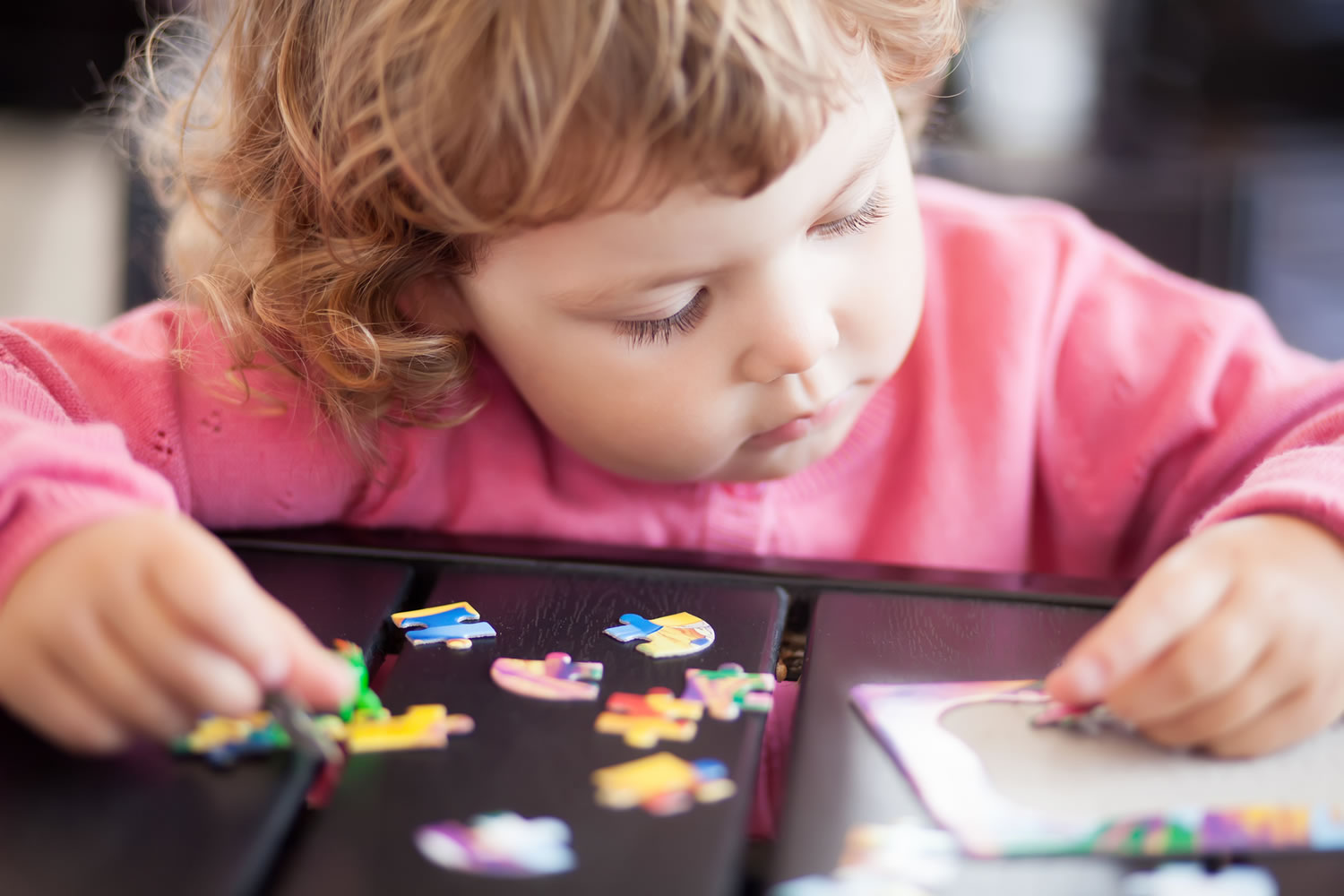The power of puzzle play
Published on Tuesday, 27 October 2020
Last updated on Tuesday, 27 October 2020

Educators have always understood the value of jigsaw puzzles as an enriching playtime activity. Now, new research has shown that children understand that individual pieces, when assembled, produce a picture around the age of four years.
Published in the Society for Research in Child Development, the study looked at the cognitive processes underlying jigsaw puzzle completion, finding the average child is able to use visual cues from puzzle pieces and the box to complete a puzzle at around the age of four. Three-year-old children use trial and error to put the pieces together.
Scottish researchers analysed data from 169 children aged between three and five, examining how they put together different types of puzzles at different ages. The use of jigsaw puzzles provided a natural and useful tool to study the development of a child’s pictorial understanding.
“We looked at children’s ability to do jigsaw puzzles. Surprisingly, there’s virtually no research on this, despite the common assumption these are good educational toys, said lead researcher, Dr Martin Doherty, University of East Anglia.
“The really unique thing about this study is that we are showing the age and stage of development at which children gain a fundamental understanding of the nature of pictures. We think this lays a vital foundation for learning to draw and paint.”
The team of researchers from the Universities of Edinburgh Napier, West of Scotland and Warwick coordinated some of the children to work on traditional jigsaw puzzles with a picture, jigsaws with no picture, and picture-based puzzles made up of equal-sized rectangular pieces. Half of this group were given a picture guide showing what the completed image should look like.
Another group were given a jigsaw puzzle with a piece missing, and different options to fill the gap.
Dr Doherty said. “We found that children who passed tests for representational understanding were able to complete picture jigsaws faster and more efficiently. In general, efficiency increased between the ages of three and five years.”
The benefits of jigsaw puzzles
Prior research into the outcomes of young children playing with jigsaw puzzles has revealed benefits for a child’s hand-eye coordination, spatial ability, social development, problem-solving strategies and memory skills.
While jigsaw puzzles provide benefits for a child’s development, it is important to be mindful about which puzzle a child is given to solve. Providing a puzzle that is beyond their skill level or developmental stage may cause extreme frustration. The puzzle should provide a challenge, in fact it can be a great learning opportunity to manage emotions, however, if it is too hard the child may give up.
There are many age appropriate jigsaw puzzles on offer ranging from older infants to pre-schoolers, but ensure children are supported especially in the younger years. Know your children. By careful observation, you can provide for a range of developmental abilities, with puzzles ranging in type, size and theme.
Choosing an appropriate puzzle requires consideration of the number of pieces, piece size, the degree of detail of each puzzle and even the child’s experience. All these factors contribute to choosing the best puzzle to fit the interests and skill level of a young child or toddler.
Puzzle play is great for building cognitive and fine motor skills, but it can also be a time to build social, emotional and language skills. Here are four specific areas where children learn through puzzle play:
Spatial vocabulary
Use words such as turn, flip and rotate when supporting children to fit puzzle pieces together. Children also can learn words such as above, below and beside, when they describe the position of puzzle pieces in relation to each other.
Problem-solving
Children learn to work through a problem and reach a solution as they fit the pieces together. They may need to learn to set aside the piece they hope to put in the puzzle while searching for one that fits in the spot they need. They also may learn different tactics – such as putting together all outside pieces first –plus use memory and concentration skills to complete the puzzle. When they work on puzzles with peers, they also share their strategies with each other and can work through difficulties collaboratively.
Task completion and persistence
The process of putting together a puzzle has a finite end when the puzzle is solved. Children encounter frustration when they cannot easily solve a puzzle, and with support they can learn to manage these emotions and enjoy the success of task completion. Working through these feelings helps children develop persistence, or the ability to keep going in the face of difficulty.
Fine motor and hand-eye coordination
Children refine their fine motor and hand-eye coordination skills as they manipulate puzzle pieces to put the puzzle together. They develop the small muscles in their hand that allow them to grasp and move puzzle pieces with precision.
Remember the goal of a jigsaw puzzle for a child is to solve it and build a picture. It is about involving children mindfully in the activity, having fun, the joy of completion and the feeling of achievement.
References and further resources:
Nursery World: New research reveals how children learn to do jigsaw puzzles
Related Articles

Fun Ideas for Boosting Activity Levels
The Healthy Active Learning initiative has been designed to promote and improve healthy eating and physical activity in schools, kura and early learning services across Aotearoa.

Having fun and being fun – Serious business for kids
How being seen as fun in children's social circles and how it can contribute to a child’s social success and standing among their peers.

Research: How play environments impact child health
New research demonstrates the effects of built environments on activity and obesity levels among preschool aged children and how nature play boosts activity levels.
